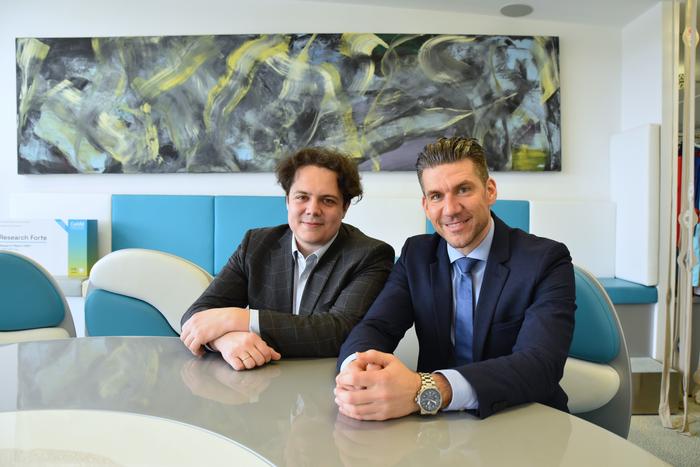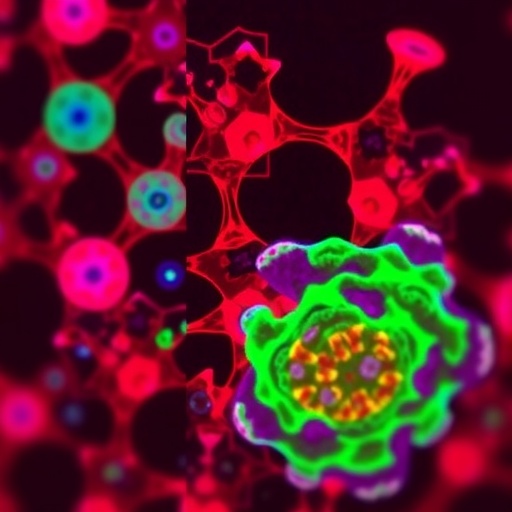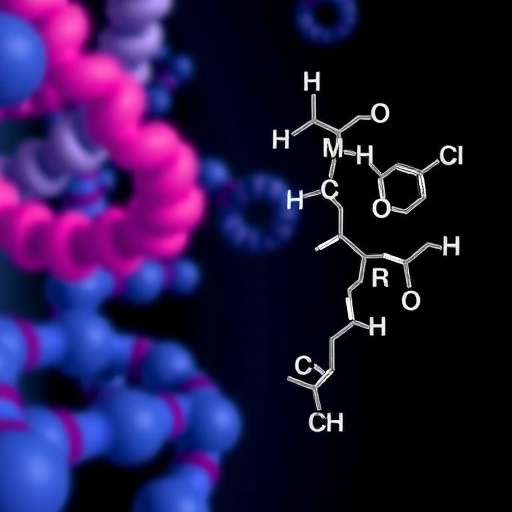The liver is not only the largest internal organ but also vital for human life as a metabolic center. It also possesses remarkable self-healing powers: even when large portions are removed, such as during surgery, they quickly regenerate in healthy individuals. However, in cases of repeated or chronic injury to the liver tissue, as caused by excessive alcohol consumption or viral hepatitis, this regenerative capacity fails. Scarring occurs, known as fibrosis, where liver cells are replaced by fibrous tissue. The liver hardens and becomes increasingly unable to perform its functions – in the worst case, this leads to liver failure.

Credit: © Anna Yuwen / CeMM
The liver is not only the largest internal organ but also vital for human life as a metabolic center. It also possesses remarkable self-healing powers: even when large portions are removed, such as during surgery, they quickly regenerate in healthy individuals. However, in cases of repeated or chronic injury to the liver tissue, as caused by excessive alcohol consumption or viral hepatitis, this regenerative capacity fails. Scarring occurs, known as fibrosis, where liver cells are replaced by fibrous tissue. The liver hardens and becomes increasingly unable to perform its functions – in the worst case, this leads to liver failure.
To better understand the scarring process, a research team led by Thomas Reiberger, Professor of Gastroenterology and Hepatology at MedUni Vienna and Adjunct Principal Investigator at CeMM, examined gene activity in two different mouse models exhibiting varying degrees of liver disease severity, also capturing certain phases of spontaneous regression of the disease. At the same time, important indicators of disease severity, such as portal venous pressure, blood markers of liver injury, or the extent of liver fibrosis based on liver tissue samples, were recorded. The results were published in the journal iScience (DOI: 10.1016/j.isci.2024.109301).
Dynamic molecular processes can reverse liver fibrosis
A highly dynamic pattern of gene expression was observed, both during the development of fibrosis and, interestingly, also during the regression of liver fibrosis. Some genes were upregulated during the progression of the disease and downregulated during regression, while for others, it was the opposite. However, a number of genes showed persistent expression changes even during the regression phase, indicating long-lasting effects of liver damage. Using state-of-the-art bioinformatics methods, these genetic patterns were linked to the disease indicators described above. In doing so, the researchers identified genetic drivers of the disease that have potential as targets for the development of future therapies.
Through specially developed network algorithms, four important groups of genes were identified, which could be linked to the dynamics of fibrosis, portal venous pressure, histological data, and blood markers. These so-called “hub” genes could all be further developed into clinically relevant biomarkers. This was also tested and confirmed in the study with datasets from patients with liver diseases. In collaboration with researchers from the University of Strasbourg and the Institut Universitaire de France, some of the “hub” genes were also confirmed in patients who were cured of hepatitis C, and thus had a regressed liver disease.
The present study reveals genetic mechanisms in the development of liver fibrosis and offers new therapeutic possibilities to intervene in these mechanisms. Further studies are needed to fully understand the potential of the hub genes and to use them for therapeutic strategies focusing on the regression of liver fibrosis – especially in patients with liver cirrhosis who adhere to alcohol abstinence or have been cured of viral hepatitis.
***
The Study “Transcriptomic signatures of progressive and regressive liver fibrosis and portal hypertension” was published in iScience on March 15, 2024. DOI: 10.1016/j.isci.2024.109301
Authors: Oleksandr Petrenko, Philipp Königshofer, Ksenia Brusilovskaya, Benedikt S. Hofer, Katharina Bareiner, Benedikt Simbrunner, Frank Jühling, Thomas F. Baumert, Joachim Lupberger, Michael Trauner, Stefan G. Kauschke, Larissa Pfisterer, Eric Simon, André F. Rendeiro, Laura P.M. H. de Rooij, Philipp Schwabl, Thomas Reiberger
Funding: Thomas Reiberger received funding from the Austrian Federal Ministry for Digital and Economic Affairs, the National Foundation for Research, Technology and Development, Boehringer Ingelheim, and the Christian Doppler Research Association.
The CeMM Research Center for Molecular Medicine of the Austrian Academy of Sciences is an international, independent and interdisciplinary research institution for molecular medicine under the scientific direction of Giulio Superti-Furga. CeMM is oriented towards medical needs and integrates basic research and clinical expertise to develop innovative diagnostic and therapeutic approaches for precision medicine. Research focuses on cancer, inflammation, metabolic and immune disorders, and rare diseases. The Institute’s research building is located on the campus of the Medical University and the Vienna General Hospital.
The Medical University of Vienna (MedUni Vienna) is one of the longest-established medical education and research facilities in Europe. With almost 8,000 students, it is currently the largest medical training centre in the German-speaking countries. With more than 6,000 employees, 30 departments and two clinical institutes, twelve medical theory centres and numerous highly specialised laboratories, it is one of Europe’s leading research establishments in the biomedical sector. MedUni Vienna also has a medical history museum, the Josephinum..
www.meduniwien.ac.at
For further information please contact:
Stefan Bernhardt
PR & Communications Manager
CeMM
Research Center for Molecular Medicine of the Austrian Academy of Sciences
Lazarettgasse 14, AKH BT 25.3
1090 Vienna, Austria
Phone +43-1/40160-70 056
Fax +43-1/40160-970 000
[email protected]
www.cemm.at
Journal
iScience
DOI
10.1016/j.isci.2024.109301
Method of Research
Experimental study
Subject of Research
Animals
Article Title
Transcriptomic signatures of progressive and regressive liver fibrosis and portal hypertension
Article Publication Date
15-Mar-2024




